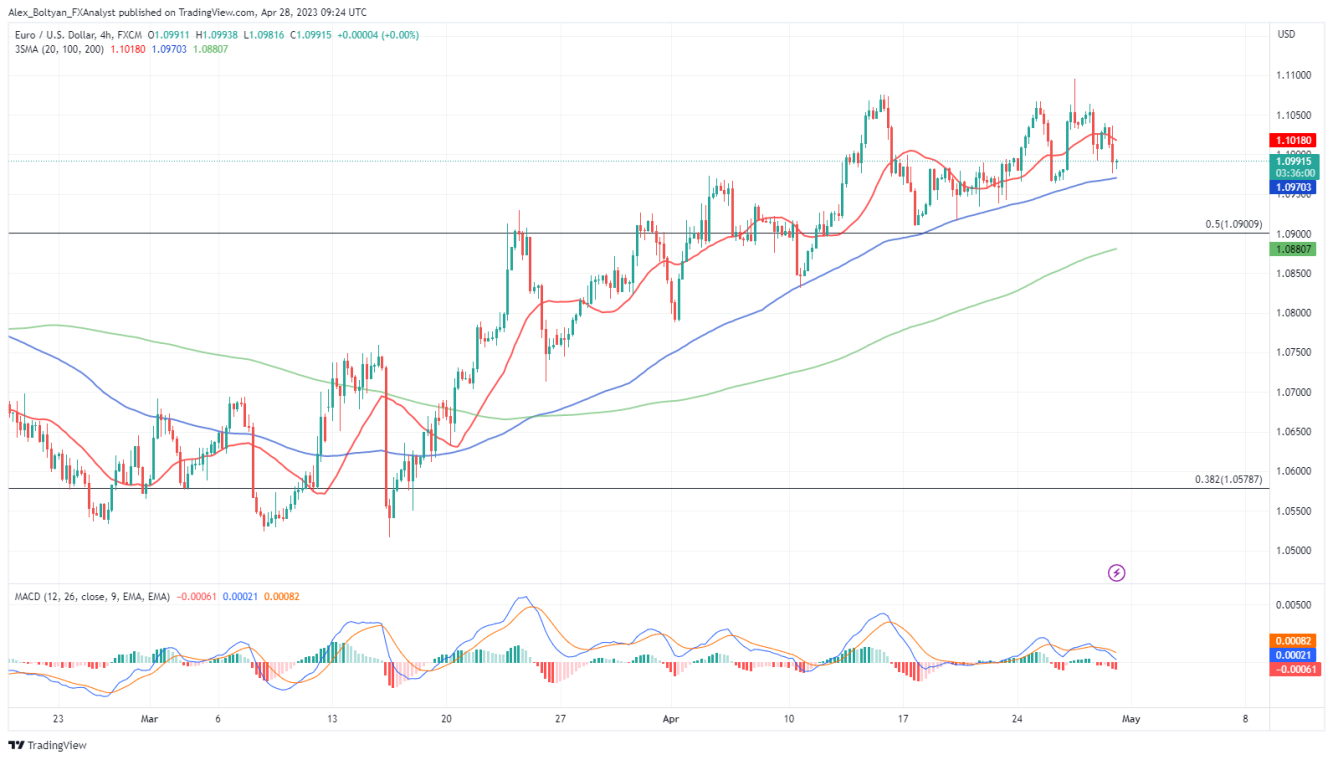The EUR/USD pair has retreated below the 1.1000 zone following Eurozone economic data and on the back of a stronger US Dollar. Additionally, equity markets are falling boosting further the greenback. Markets brace for more data, with German inflation and US Core PCE.
At the time of writing, the EUR/USD pair is trading around 1.0985, down 0.35% on the day after peaking at 1.1039.
The US economy expanded at a 1.1% annualized pace in the first quarter, according to the first estimate. It showed strong consumer and higher inflation indicators. On Friday, the US reports Personal Spending and Income, including the Core Personal Consumption Expenditure Price Index, the Federal Reserve's preferred inflation gauge. Also relevant will be the Employment Cost Index. Next week is the FOMC meeting.
In Europe, Inflation rebounded in France from 6.7% to 6.9% YoY and in Spain from 3.3% to 4.1%, German figures are due later in the day, expected to show a slowdown considering regional numbers already out. According to the preliminary report, the Euro area expanded marginally during the first quarter.
The numbers from Europe add pressure on the European Central Bank to continue rising rates. Next week is the monetary policy meeting and the question is: 25 or 50 basis points.
.
From a technical perspective, the EUR/USD pair maintains an overall bullish bias. However, certain indicators and challenges in holding above 1.1000 suggest the potential for a correction. The pair has been unable to consolidate above 1.1060, and if it manages to do so, it would clear the way to reach 1.1100 and potentially 1.1150.
If the EUR/USD slides below 1.0970 in the next few hours, it may suggest further weakness for the euro. Additionally, a daily close below the 20-day Simple Moving Average, which is currently at 1.0960, could trigger a drop to the support area around 1.0900/10. On the other hand, if the euro rises above 1.1030, it should strengthen.


